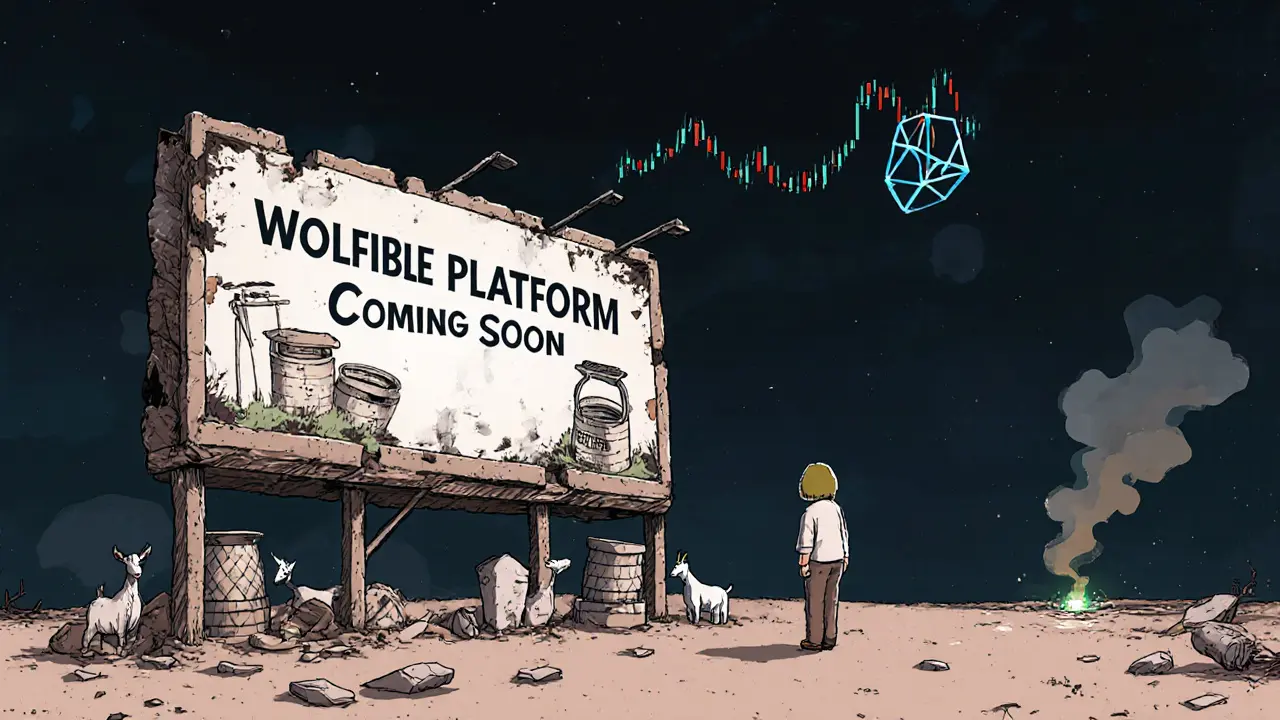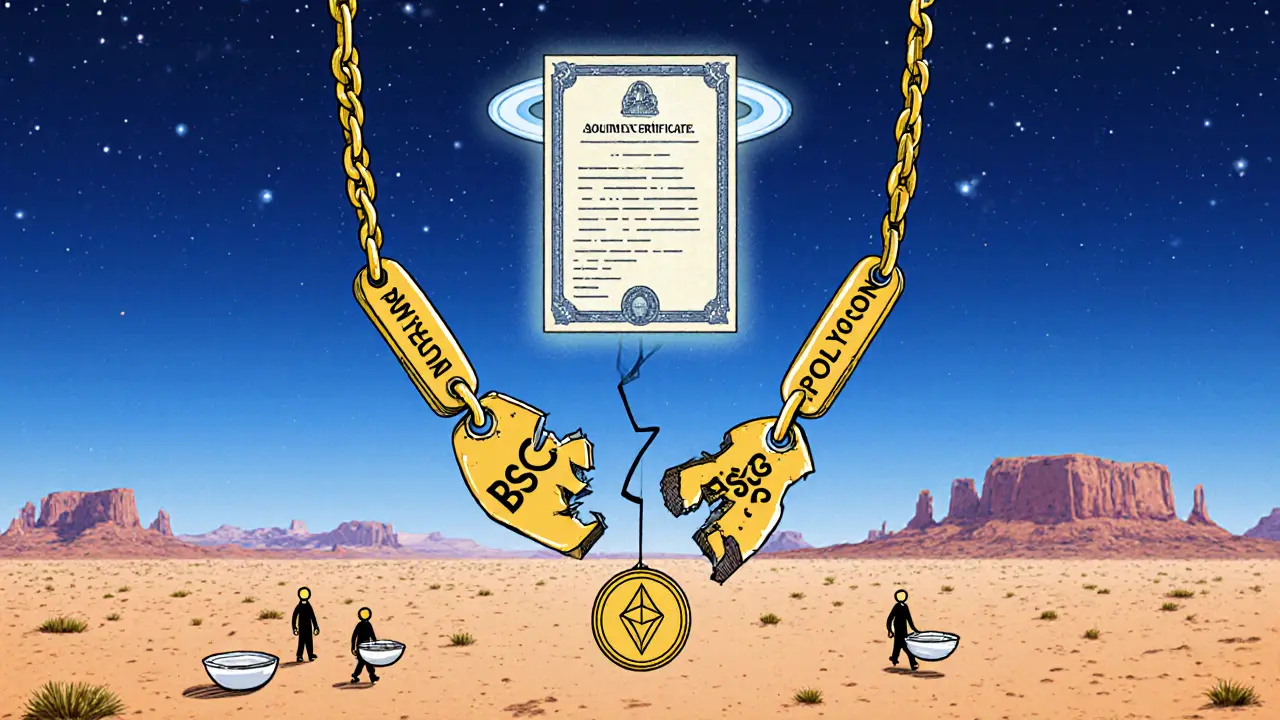WSPP Airdrop by Wolf Safe Poor People (Polygon): How It Worked and What Happened Since
WSPP Airdrop Value Calculator
Value Comparison
The WSPP airdrop wasn’t just another crypto giveaway. It was a real attempt to use blockchain to fight global poverty - and it came with serious risks, low liquidity, and a story that’s still unfolding. If you’re wondering whether you missed out, or if this project still has any value today, here’s what actually happened - no hype, no fluff.
What Was the WSPP Airdrop?
The Wolf Safe Poor People (WSPP) project launched its first major airdrop in December 2021 through MEXC’s Kickstarter program. Users didn’t just sign up - they had to stake MX tokens to vote for WSPP to be listed on the exchange. When the community hit the voting goal of 18,956,491.25 MX tokens, the airdrop triggered automatically. Around 215 million WSPP tokens were distributed to participants who helped make it happen. This wasn’t a random giveaway. It was a community-driven launch. People didn’t get tokens for free just because they had a wallet. They had to put real money (MX tokens) at risk to prove they believed in the project. That’s unusual. Most airdrops just spam wallets. WSPP made people invest first. The goal? To create the first cryptocurrency designed to reduce world poverty. The idea was simple: every time someone held WSPP, a small percentage of each transaction would go toward funding poverty relief efforts. The project claimed to be building a decentralized marketing platform where token holders could earn rewards while helping others.Why Polygon? The Switch from BSC
WSPP started on Binance Smart Chain (BSC). But in 2021, as gas fees on Ethereum and BSC started climbing, the team moved part of the project to Polygon. Why? Because Polygon is cheaper and faster. For a project that wants to help poor people - many of whom might only have $1 to spend on a transaction - low fees aren’t optional. They’re essential. The Polygon version of WSPP uses contract address0x46d502fac9aea7c5bc7b13c8ec9d02378c33d36f. This version was meant to be the main future of the project. The original BSC version still exists, but trading volume there is nearly dead. On Polygon, you could interact with the token using MetaMask or other wallets without paying $10 in gas to send $1 worth of tokens.
The move showed the team understood real-world constraints. If you’re trying to help people in developing countries, you can’t ask them to pay $5 in fees to receive $0.02 in tokens. Polygon made that possible.
How the Token Was Supposed to Work
WSPP wasn’t just a token. It was designed as a DApp platform. That means it wasn’t just about buying and selling. The plan was to build a website called Wolfible - a decentralized platform for fundraising, NFTs, and community-driven charity campaigns. Here’s how it was supposed to work:- Users would buy or earn WSPP tokens.
- Each transaction would automatically redistribute a small portion of tokens to all holders - like a passive income system.
- Part of the redistributed tokens would be sent to a wallet dedicated to poverty relief.
- Community members could propose charity projects, vote on them, and fund them using WSPP.
- NFTs on the Wolfible platform would represent real-world aid - like a goat for a family or clean water for a village.

The Audit and Security Claims
One thing WSPP did right: it got audited. Solidity Finance reviewed the smart contracts before launch. The audit report is publicly available at solidity.finance/audits/WSPP. The audit found no critical vulnerabilities. That’s rare for a project like this. Most poverty-focused crypto projects never get audited. They’re too small, too niche, too risky. But WSPP’s team knew that if people were going to trust this with real money - even small amounts - they needed proof it wasn’t a scam. The audit didn’t guarantee success. But it did mean the code wasn’t obviously broken. That’s more than most can say.Where Is WSPP Today? (November 2025)
Let’s cut through the noise. As of November 2025:- The Polygon version of WSPP trades at $0.0000000194 USD.
- The market cap is around $54 USD.
- 24-hour trading volume is $104 - barely enough to cover a coffee.
- It’s ranked #3542 on CoinMarketCap.
- The original BSC version trades at $0.0000000000624 - almost worthless.
- It’s not listed on Binance, Coinbase, or Kraken.
- It’s only available on MEXC and a few small decentralized exchanges.
Why Did It Fail?
This isn’t about bad code. It’s about bad execution. 1. Too vague a mission. “Helping the poor” sounds noble, but it’s not specific. How much? Who? Where? Without measurable goals, people didn’t believe it. 2. No real-world partnerships. No NGOs, no charities, no government agencies. Just a website and a token. Without trusted partners, the mission looked like marketing. 3. Zero media or influencer traction. No YouTube explainers. No Reddit threads. No news coverage. It stayed inside Telegram groups. 4. Low liquidity killed it. If you can’t sell your tokens easily, you don’t hold them. Even if you believe in the cause, you need to cash out eventually. With $100 in daily volume, you’re stuck. 5. The crypto market moved on. In 2021, people were excited about “crypto for good.” By 2025, that wave is gone. DeFi is about yield, NFTs are about art, and memes are about memes. Social impact crypto? No one’s looking.
Should You Still Try to Get WSPP Tokens?
If you’re thinking about buying WSPP now - don’t. It’s not an investment. It’s a graveyard. The token has no utility. No trading volume. No roadmap updates. No team activity. The Telegram group @robowolfproject has been quiet since 2023. The only reason to hold it now is if you participated in the original airdrop and want to keep it as a historical artifact. Maybe one day, someone will write a case study on it. Maybe it’ll become a lesson in how good intentions fail without execution. If you’re looking for crypto that helps people, look at projects with real partnerships: GiveCrypto, BitGive, or even UNICEF’s crypto fund. They have audits, reports, and measurable outcomes.What You Can Learn from WSPP
The WSPP airdrop teaches us something important: Good intentions don’t build sustainable crypto projects. You can’t just slap “help the poor” on a token and expect people to care. You need:- A clear, measurable goal (“We will fund 1,000 clean water wells by 2026”)
- Transparent reporting (“Here’s where every token went”)
- Real-world partners (“We work with Oxfam and Water.org”)
- Liquidity and exchange listings
- A team that shows up
Final Thoughts
The WSPP airdrop was real. The tokens were distributed. The code was secure. But the dream never became reality. It’s a reminder that blockchain doesn’t fix bad ideas. It just makes them harder to ignore. If you ever hear about another “crypto to end poverty” project - ask these three questions:- Who are your actual partners?
- Where’s the public ledger of aid delivered?
- Can I sell my tokens without losing 99% of my money?
Was the WSPP airdrop real?
Yes. The WSPP airdrop was real and occurred in December 2021 through MEXC’s Kickstarter program. Users who staked MX tokens to vote for WSPP’s listing received 215 million WSPP tokens as a reward. The distribution was automated, verifiable, and tied to a specific voting threshold being met.
Can I still claim WSPP tokens from the airdrop?
No. The airdrop ended in December 2021. There is no ongoing claim period. If someone is offering to help you claim WSPP tokens now, it’s a scam. The only way to get WSPP today is to buy it on MEXC or another small exchange - but with almost no liquidity, it’s not worth the risk.
Is WSPP listed on Binance or Coinbase?
No. WSPP is not listed on Binance, Coinbase, Kraken, or any other major exchange. It’s only available on MEXC and a few decentralized exchanges. This lack of listing is one of the biggest reasons why the token has no trading volume or value.
What’s the current price of WSPP on Polygon?
As of November 2025, the WSPP token on Polygon trades at approximately $0.0000000194 USD. The total market cap is around $54 USD, and daily trading volume is under $150. This indicates extremely low demand and liquidity.
Did WSPP actually help reduce poverty?
There is no public evidence that WSPP ever funded or delivered any real-world poverty relief. No charity partnerships were announced. No impact reports were published. The project’s mission remained theoretical - a concept without execution. Without transparency or third-party verification, the claim that it helped the poor is unproven.
Is the WSPP smart contract safe?
Yes. The WSPP smart contract was audited by Solidity Finance before launch, and the audit report is publicly available. No critical vulnerabilities were found. However, a secure contract doesn’t mean the project is viable. Security prevents theft - it doesn’t guarantee purpose or success.
Should I invest in WSPP now?
No. WSPP has no trading volume, no active development, no community engagement, and no clear use case. It’s not an investment - it’s a dead project. Buying it now is like buying a lottery ticket with zero chance of winning. There’s no upside, only risk of losing money on gas fees.